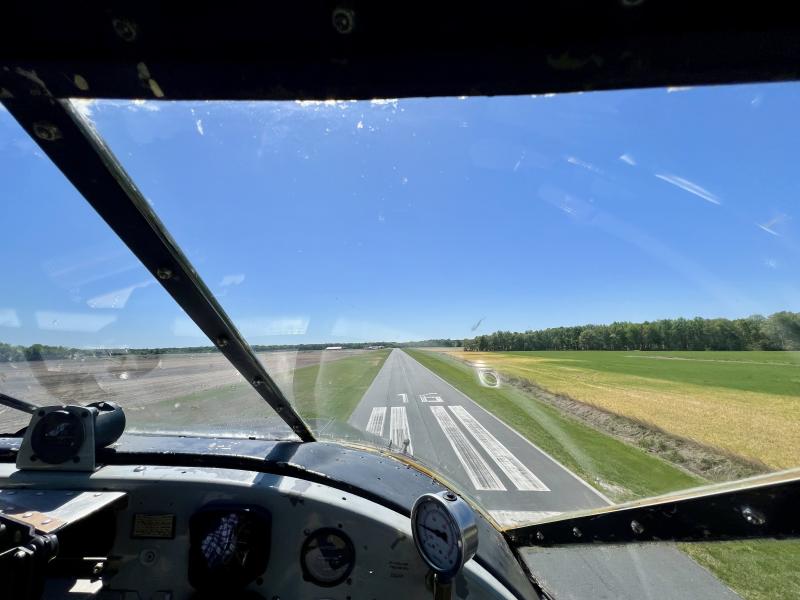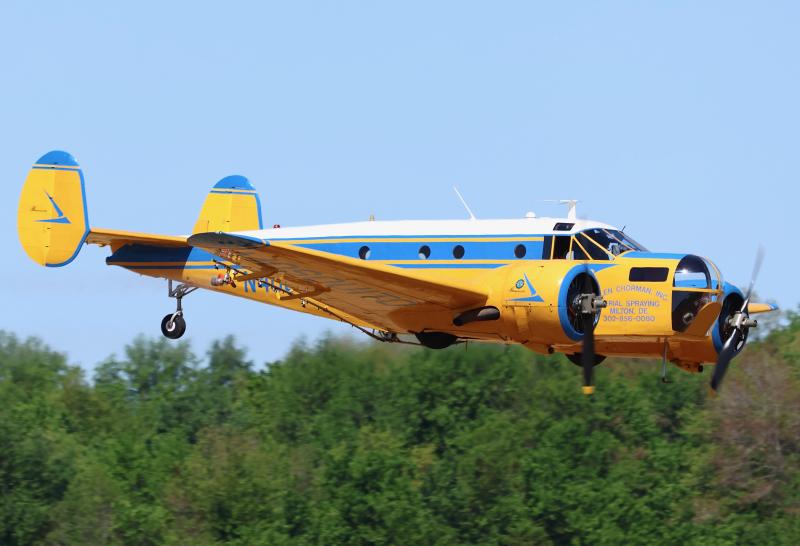Chorman readies planes for mosquito season
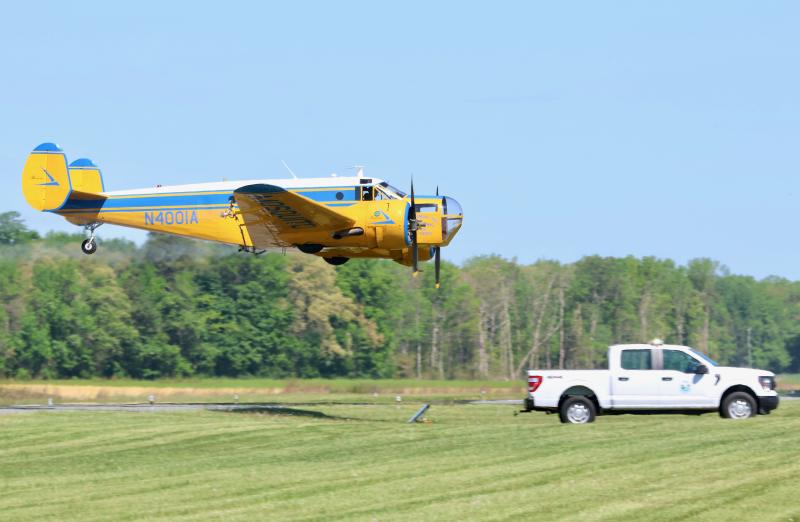
It was Monday morning and already a busy day for Jeff Chorman as he walked across the ramp at his airport near Greenwood.
The owner of Chorman Aerial Spraying was getting ready for calibration day, an annual rite of spring for the two vintage aircraft that wage aerial combat with Delaware’s mosquitos.
“It’s something we do every year, check the flow rate for each nozzle and nozzle type, and for each chemical that we do,” Chorman said.
The two planes that were being calibrated April 28, were both twin-engine Beechcrafts.
One is a rare AT-11, a former U.S. Army Air Force bombardier trainer built in 1944. It is yellow and blue with the Allen Chorman name on the nose.
The other is a C-18S, gray with orange trim, the colors of its former operator, the U.S. Coast Guard. That one was delivered to the Navy in 1945.
They have been used as sprayers since the mid-1960s.
Both have “Mosquito Control” titles under the wings.
“We only use them for adulticiding mosquitos. You’re required to have a twin-engine plane to fly over a populated area,” Chorman said.
Adulticiding is the term for using pesticides to kill adult mosquitos to control the population.
“The label is the law, and that’s from the Environmental Protection Agency. We can only put out what is prescribed on the label,” Chorman said.
Chorman’s fleet of smaller, single-engine cropdusters was calibrated earlier in the month.
The mosquito-spraying season runs from the middle of May until November.
Experts from the Delaware Department of Natural Resources and Environmental Control’s Mosquito Control Section were at Chorman Airport to “make sure the proper amount of treatment per acre, and in some instances droplet size, are achieved from both a legal and optimization standpoint,” according to Tom Moran, Mosquito Control Section administrator.
Rory Badger, one of the DNREC environmental scientists on site, said the measurements are very precise.
“We’re measuring the size of the product as it comes out, because it’s designed specifically to a certain size for the body size of the mosquito,” Badger said.
DNREC contracts with Chorman exclusively to provide the aerial spraying in Delaware. The company also sprays the island of Chincoteague and Captain’s Cove development in Virginia.
Calibration day began with ground inspections.
The aircraft were then ready to fly.
The AT-11 was first to fire up its Pratt & Whitney radial engines. They jump to life with a puff of smoke and a throaty roar.
Chorman was flying in the left seat of the former Coast Guard aircraft. He has about 2,000 hours in twin Beeches.
“I started riding with my dad in both of them when I was 5 or 6 years old. I started flying them both as pilot in command when I was 18, just after getting my multi-engine rating,” Chorman said.
He effortlessly maneuvered the plane over the fields, getting it into position to make the required passes over DNREC equipment, called spinners.
The planes drop the chemicals on slides on the spinners.
DNREC then takes the slides back to the lab to analyze the droplets under a microscope to make sure they meet specifications. They were expected to have the results in a couple of days.
The scientists were required to wear protective suits during ground testing in the hangar, because they were handling the product in a high volume.
DNREC’s Mosquito Section website states, “The EPA has determined through its testing and review process that when these insecticides are applied according to the label instructions, their application poses no unreasonable risks to human health, wildlife or the environment. For the general public, exposure to spraying will not cause any harm.”
More details can be found at dnrec.delaware.gov/fish-wildlife/mosquito-control.
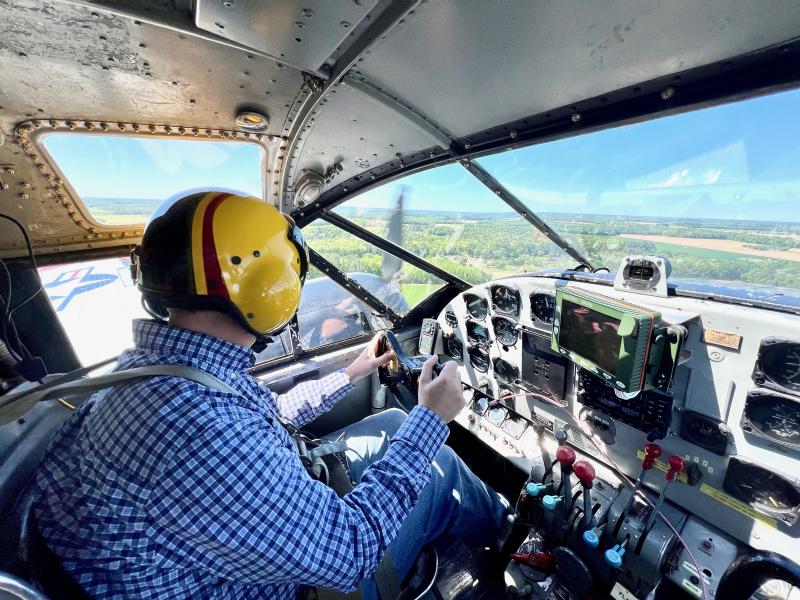
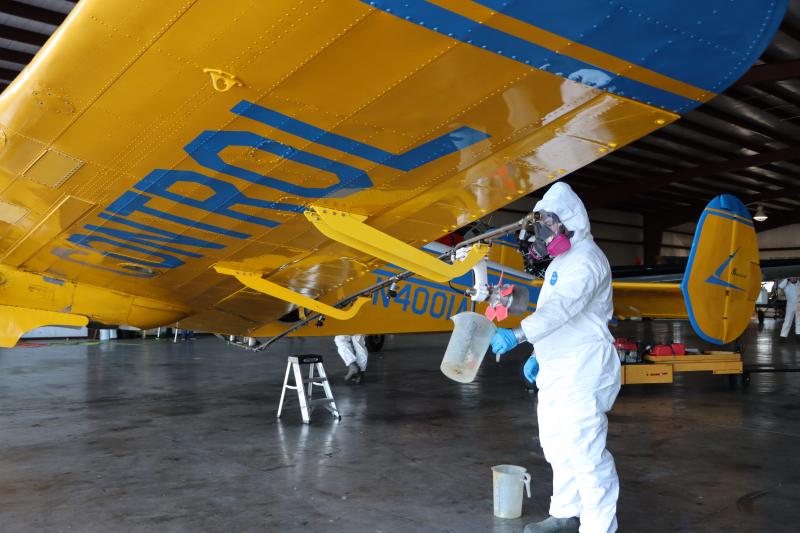
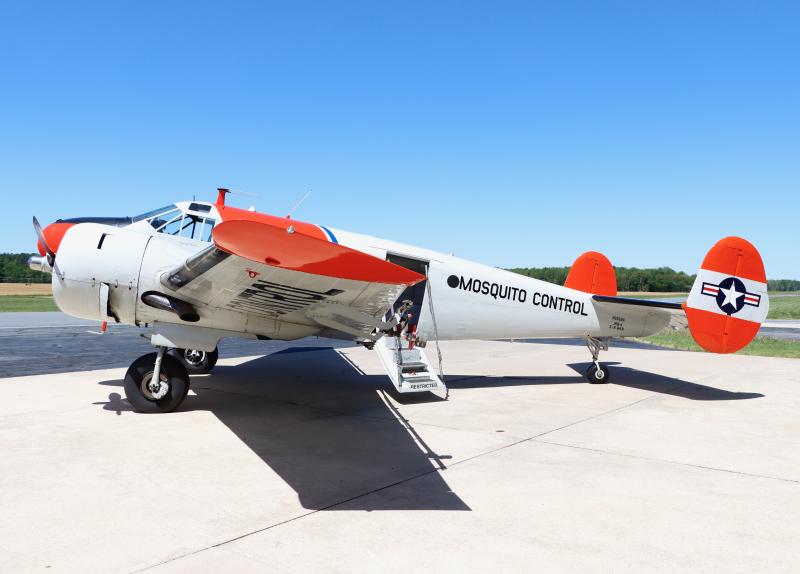
Bill Shull has been covering Lewes for the Cape Gazette since 2023. He comes to the world of print journalism after 40 years in TV news. Bill has worked in his hometown of Philadelphia, as well as Atlanta and Washington, D.C. He came to Lewes in 2014 to help launch WRDE-TV. Bill served as WRDE’s news director for more than eight years, working in Lewes and Milton. He is a 1986 graduate of Penn State University. Bill is an avid aviation and wildlife photographer, and a big Penn State football, Eagles, Phillies and PGA Tour golf fan. Bill, his wife Jill and their rescue cat, Lucky, live in Rehoboth Beach.














